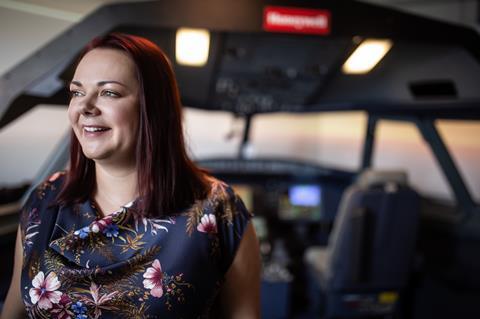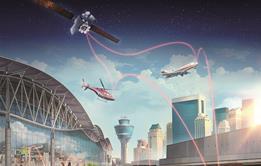Honeywell is a key player in Europe’s SESAR project and Brno-based avionics architect and future shaper Jolana Dvorska is helping to develop technologies making skies easier to manage for pilots and controllers
Jolana Dvorska is helping create a safer, more efficient, and more environmentally-friendly air transport system for Europe. The avionics architect is one of around 700 aerospace specialists at Honeywell Technology Solutions in Brno in the Czech Republic, and deeply involved in the company’s contribution to the Single European Sky ATM Research, or SESAR, programme, which coordinates public and private efforts to design an “intelligent” air transport system for the continent, ensuring global interoperability.

Honeywell has played a leading role in SESAR since its foundation in the mid-2000s, and has since been working on over 40 initiatives around next-generation air traffic management and avionics technology. “We are designing green mobility technologies,” says Dvorska, who joined Honeywell 11 years ago. “We are working towards increased automation to full autonomy solutions, we design technologies for precise navigation and landing, communication, surveillance, connectivity, services as well as cockpit systems.”
The Brno facility, which was established in 2005, is one of the largest research and development centres in Europe, with thousands of engineers and scientists working on product innovation, not just in aerospace, but across Honeywell’s other industrial activities, including buildings, manufacturing plants and supply chains. The city – 2h drive from Prague – is the country’s industrial and technology hub, with “strong engineering capabilities, a strong start-up culture, and a geography that helps us support customers throughout Europe,” says Dvorska, who studied at the Brno University of Technology where she graduated in electrical engineering with focus on robotic navigation.
She has worked on SESAR almost since Honeywell became involved, moved through various research and management roles and is now an avionics architect, where she is responsible for the overall technical leadership of the programme and is working to shape the future vision. As part of Advanced Technology Europe organisation within Honeywell, her job is to “lift technologies from concept or ideas to mock-ups and simulations, all the way to validated prototypes that are transitioned to product groups”, she says. “We define key products for the next 10 years and beyond. We work with partners and customers to execute proof-of-concepts and demonstrations on future products and de-risk them. It is very gratifying to see our work in products and deployed.”
The team’s SESAR development work has included an “i4D” trajectory capability for the Airbus A320’s flight management system. It transmits the trajectory to air traffic control, increasing the predictability with which approaching aircraft can be managed, helping reduce delays and improve fuel efficiency. Another product validated with Airbus and Dassault, and now ready for industrialisation, is a surface indication and alerting system, or SURF IA, that uses ADS-B technology to warn pilots of potential runway incursions, and provides pilots with another layer of safety.
Urban air mobility is a further emerging sector in which Dvorska has been involved. More than 100 start-ups are developing remotely piloted or self-flown platforms that they believe could relieve city congestion by introducing a new dimension of personal travel – through the air. Brno has been working with German electrical vertical take-off and landing vehicle pioneer Volocopter on autonomous landing technology. “Our aim is to develop solutions for autonomous landing,” she says.
Dvorska says that what most excites her about her job are her colleagues. “It really is the people. I get to work with some of the best scientists and engineers on state-of-the-art technologies,” she maintains. Another appeal is the chance to be able to “shape a greener future for aviation, one that is more sustainable, and friendly to environment and communities on the ground”. While the technology itself might be all about automation, its purpose is to create modes of travel that are “smarter, seamless and cleaner”.
Aviation is set to go through some major disruption in the next decades with electrical power opening the door to novel types of transport such as eVTOLS, and concerns about global warming spurring politicians and the public to seek carbon neutrality from the industry, she believes. Drones will also have to be better managed in civil airspace. Meanwhile, Europe’s airspace currently remains largely segregated and congested, leading to increased delays for passengers. “We all need to work together to find solutions,” she says. “We have to ensure that our airspace can cope with all these changes and new priorities, with a positive impact on the climate.”
This content was paid for by Honeywell and created in association with FlightGlobal
Reinventing Honeywell

The company has a change agenda for the 2020s and beyond
- 1
- 2
- 3
- 4
- 5
 Currently
reading
Currently
reading
Futureshaper: Jolana Dvorska
- 7
- 8
- 9
- 10
- 11
- 12
- 13

















































